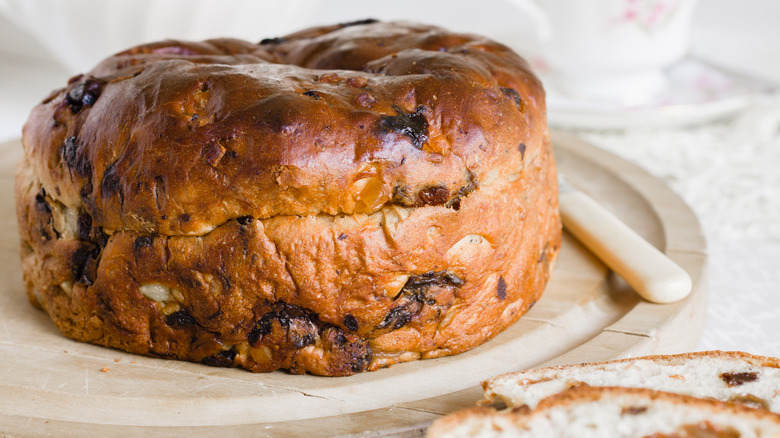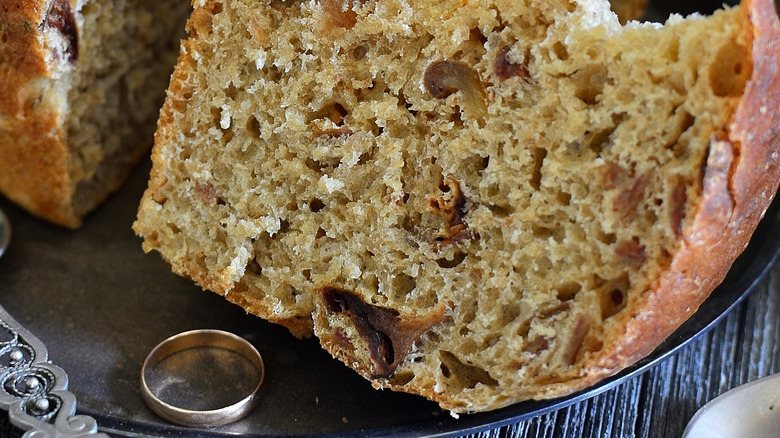The Irish Fortunetelling Bread Traditionally Served On Halloween
Across the globe, at the end of October, people come together to put on costumes, prepare sweet treats and celebrate the spookiest time of the year. Times of India reports that Halloween is celebrated everywhere from Canada to Mexico and Ireland.
According to The Travel, Halloween originated in Ireland, where it began as the Celtic festival Samhain, which translates to "summer's end." The one-day celebration of Samhain was also when people believed spirits could walk among the living. Bonfires were lit as a way to ward off the spirits and also ensure good luck for the future farming season. Costumes were also an important part of Samhain, though they were a far cry from today's costumes. In order to ward off spirits, people would wear animal fur and skins. In modern Ireland, revelers come from all corners of the globe to Derry's Halloween festival.
As far as food goes, the Irish celebrate the holiday with some unique food offerings. Colcannon, the hearty Irish version of mashed potatoes with kale or cabbage is served up on Halloween(per CIE Tours). Even though people go trick-or-treating and eat candy, it's customary to consume sweet, fruitcake-style bread.
Look out for the ring
According to Food52, the traditional Irish bread that is served on Halloween is called "Barmbrack." This is a sweet yeast bread filled with pieces of dried fruit and traditionally soaked in hot tea. The most unique aspect of the bread is that it is said to be able to tell the fortunes of those who eat it, based on the trinkets that are hidden within the bread. Traditionally, golden rings were hidden in the bread, and whoever gets the slice with the ring is said to be married within the year. Other fortune-telling trinkets that can be baked into the bread include a thimble, a silver coin, or a small piece of cloth. The coin represents wealth, the thimble indicates a spinster life, and the cloth represents poverty.
In today's time, Barmbracks with tiny rings can be found in grocery stores year-round. While the fates may seem a bit scary, the Irish call it "craic," which means fun. The concept of hiding fun trinkets in cake is not unique to the Irish. During Mardi Gras in New Orleans, king cake is served to celebrate the holiday. A small plastic baby is hidden in the cake, and whoever gets the slice with the baby is said to be prosperous, and therefore able to host the party the next year (per Better Homes & Gardens). Whichever celebratory cake you are consuming, just be sure not to accidentally swallow your trinket!

